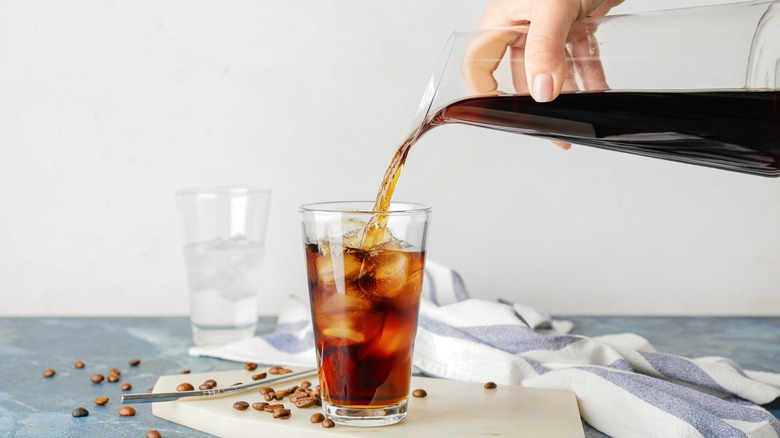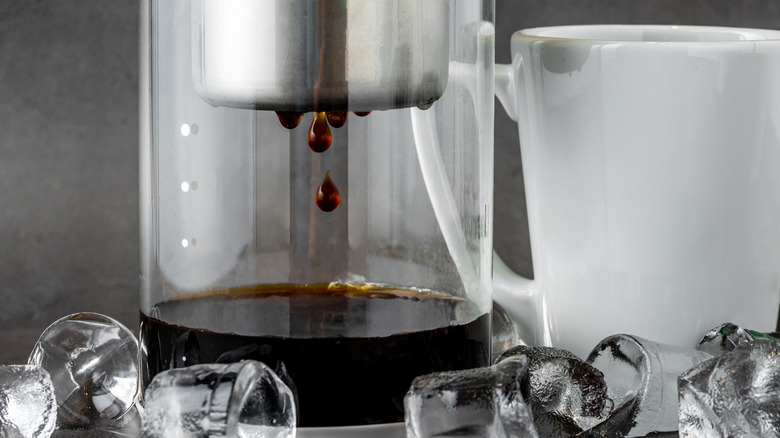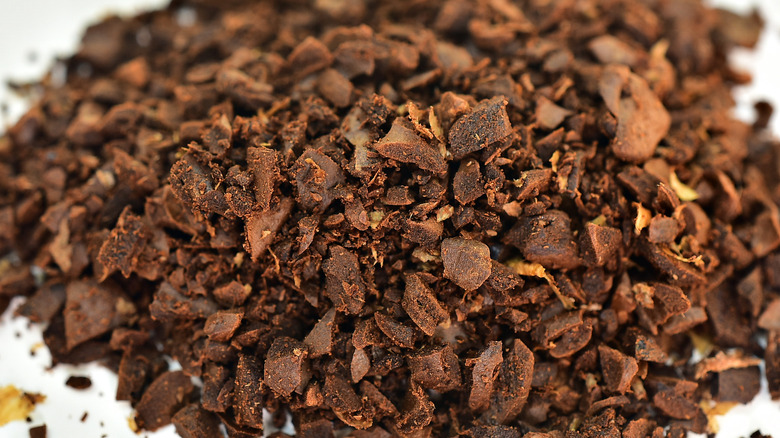How Long Do You Have To Steep Cold Brew (And Does It Really Matter)?
Cold brew coffee is a refreshing source of energy during the hottest parts of the year, but this caffeinated beverage isn't regulated to a season. It may even be the easiest type to make because of its forgiving brewing method and the numerous possibilities for customizing each batch and cup. Despite that, how long you steep the grounds is an important part of the process to understand so that you get the best tasting cold brew for your palate.
Yes. The soak time matters because leaving the beans for too long will ruin your chilled joe. Generally, you want to let the coffee sit in room temperature or colder filtered water for 10 to 24 hours, a window that you can personalize according to your preferences. Kind of like tea, the less time that the grounds steep, the milder the flavor will be. However, soaking for longer will produce more bitter results.
Without hot water, though, the coffee solubles don't totally dissolve, so you're left with a smoother, milder, and less acidic beverage that doesn't have as much of a bitter undertone. This lack of hot water is the same reason why cold brew tastes different from iced coffee, which is just hot coffee poured over ice.
How does the flavor change as the brew steeps?
As time ticks by while brewing, the various flavors held within your coffee beans will seep out and into the water. A minimum submersion time of 10 hours will bring out the flowery and fruity notes of the grounds with little acidity. However, some roasters suggest steeping for at least 12 hours to avoid under-extraction.
The sweet spot seems to be in the 15 to 20-hour range, especially for African beans that are more floral and wine-like. At 15 and 16 hours, the coffee will be fruity and bright and accompanied with a mild caramel undertone. Letting them steep for a full 20 hours will bring more smoothness and sweetness out of the grounds and leave you with more caramel notes. For a bolder brew or one that you wish to add creamer or sweetener to, soak the coffee beans for a full 24 hours. Some of the favorable natural flavors will have been lost by this point, so mix-ins will benefit each cup.
If you're unsure about when to stop steeping, take a little sip as you go to find your sweet spot. You could even slow the extraction process further by refrigerating your cold brew. If you leave it for longer than 24 hours, though, you risk ruining the batch with a woody, bitter profile. Another reason your cold brew won't taste right is if you squeeze the brew from the grounds rather than let it strain slowly.
What is the best coffee for cold brew?
Rather than exact measurements or coffee types, the process for making cold brew is more about estimating the amount of grounds and water you use. You can choose any type that you want, from the fruity notes of African beans to the sweet chocolatey profile of Guatemalan or a well-balanced house blend. Even decaf works for making cold coffee, as does using old beans.
What matters most is the size of your grounds, which needs to be a medium coarseness. Otherwise, a fine grind will lead to over-extraction and cloudy results. You can achieve the perfect grind at home by putting whole beans into a coffee grinder and using a coarse setting. Although, some stores have grinders for customers to use, while baristas are happy to do it when you purchase their beans.
Then, the amount of grounds you use depends on how strong you want the cold brew to be. For a drinkable small batch, use about 1 cup (3 ounces by weight) per 24 ounces of water. You can halve the water to make a more concentrated brew, which you can weaken with cream, milk, or extra water. After filtering out the grounds, your cold coffee will stay good for seven to 10 days in the refrigerator. You can use any leftover that has lost its flavor and freshness for cooking or baking or for diluting to water plants.


